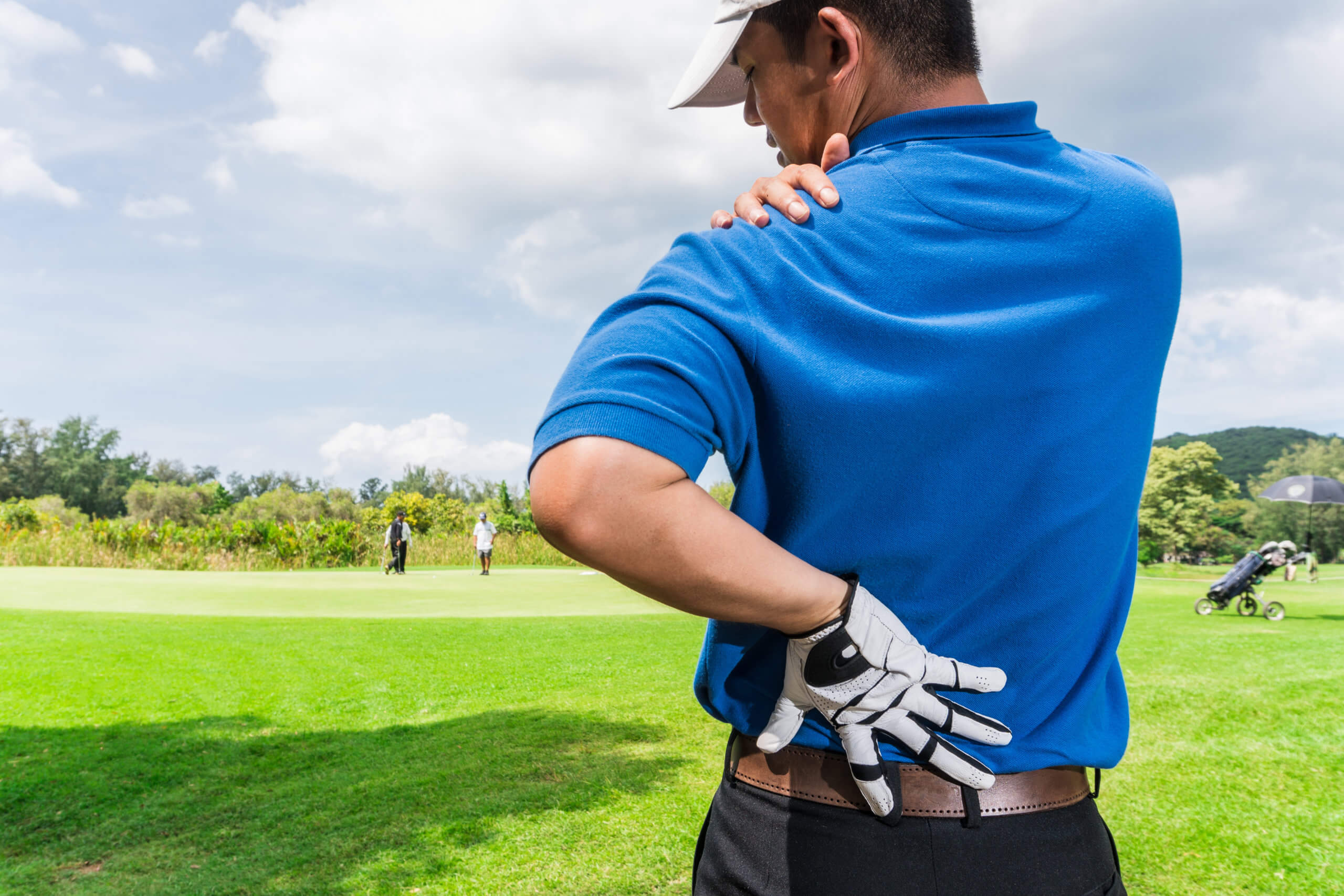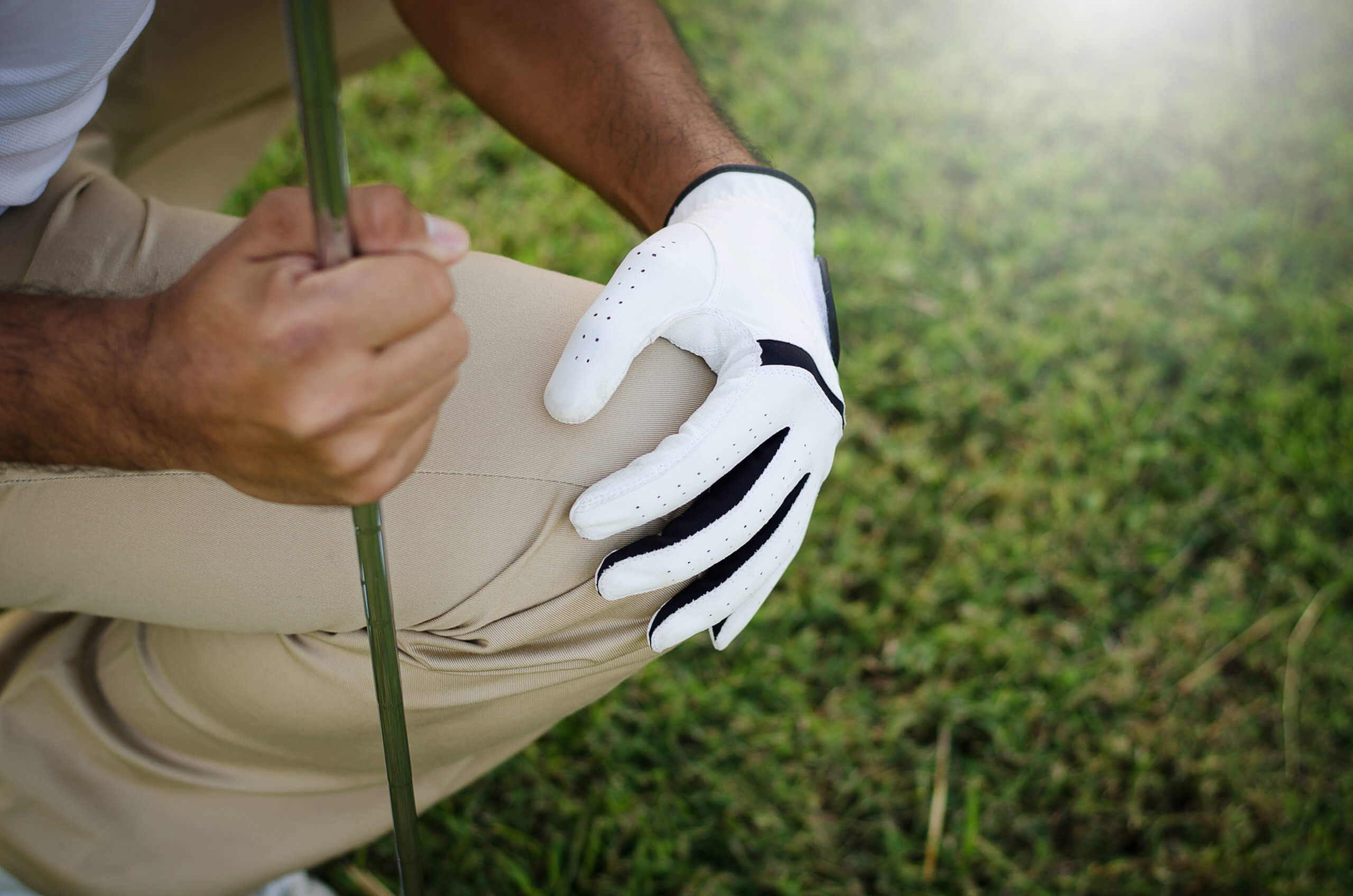Golf Injuries and Prevention
Although it seems like a low-activity kind of sport, nearly 41% of amateur golfers suffer an injury every year on the course. Before you hit the links this season, learn about the most common golf injuries, the types of pain you might experience, and how to prevent them.
Lower Back Pain After Playing Golf
The most common complaint of golfers after a round is low back pain. There are a few reasons for this:

- The repetitive motion of the golf swing puts pressure on the spine and muscles of the lower back.
- Limited flexibility can strain the back muscles during a swing.
- Poor muscle strength in the lower back and the rest of the core can also strain muscles.
Most low back pain reflects a minor injury, but there is potential for more serious damage. Make sure to build up and protect your lower back with a core strength training routine.
Golfer’s Elbow

Elbow pain is the second most common complaint among golfers. In medical terms, this is medial epicondylitis, inflammation in the tendons from the inside of the elbow to the wrist. It is a repetitive motion injury.
You’ll know you have golfer’s elbow if you experience pain on the inside of the elbow. Anything you can do to strengthen forearm muscles will help prevent the injury. Try wrist curls or squeezing a tennis ball for a few minutes a day. Golf elbow treatment is usually rest, bracing, and icing, but it might require surgery.
Shoulder Injuries
Golf shoulder pain is also fairly common. Again, the repetitive motion of the swing can cause swelling, pain, inflamed rotator cuff tendons, and other injuries. Strengthen your shoulder muscles to help them resist injury. Improving your swing form can also help.
Knee Pain and Injuries
Although it is low impact, golf does involve a very fast twisting motion, which can take a toll on the knees. Minor pain is not uncommon and can be improved by correcting your form and improving flexibility.

If you have significant or sudden onset pain in the knees after golfing, it could be a more serious injury, like a meniscus tear. This requires professional treatment and potentially arthroscopic knee surgery.
Other Golfing Injuries
Most golf-related pain and injuries occur in the back, shoulders, elbow, and knees, but other parts of the body can suffer too:
- Foot and Ankle Pain. The rotational motion of the golf swing can put stress on your feet and ankles. This can include inflamed or damaged tendons. Work on correct form and stretch each foot and ankle before playing.
- Mid-Back Pain. Mid-back pain from golf is less common than low-back pain, but it happens for similar reasons. Strengthen the muscles and stretch regularly to improve flexibility during your swing.
- Rib Pain. This isn’t common, but if your ribs hurt after golfing, you might have stressed the muscles or tendons in the area or even bruised your ribs. Flexibility in the core is essential to preventing these issues.
How to Prevent Golf Injuries
Too many golfers make the mistake of assuming that because golf is low-impact, physical preparation isn’t necessary. Preventative measures go a long way to ensuring you can enjoy your next round without pain or risk of injury:
- Strength train. You don’t need to be a bodybuilder to be a good golfer, but you should strength train regularly. Building muscle throughout your body will stabilize your swing and reduce injury risk.
- Warm up. Take ten minutes to warm up your muscles and joints before a round. Walk briskly or do some light cardio, like jumping jacks. Stretch your whole body, and don’t forget your wrists and hands.
- Start slowly. If you’re new to golf, or it’s the start of the season, start small with a short round and build up to longer games.
- Work with a pro. Poor form in your swing is a risk factor for injury. Take some time to work with your local golf pro to improve it.
Before hitting the links at great local courses, like Bay Park, Eisenhower Park, and Cold Spring Country Club, take an ounce of prevention. Consider working with a physical therapist if you have golf-related pains.
Be sure to talk to our medical director, Dr. Eric Freeman, who is also a golf enthusiast. Did you know he holds a golf-related Guinness World Record? On a summer day in 1997, he played 467 holes of golf, setting a record for the most holes played using a buggy during a 12-hour period. When we say our experts understand your need to get back on the course, we really mean it.
And if you do get hurt, contact the orthopedic and joint specialists at SI Ortho. Request an appointment online or call us at (516) 364-0070 in Woodbury, (516) 295-0111 in Cedarhurst, or (516) 665-9200 in Rockville Centre.
Posted in: Sports Medicine
